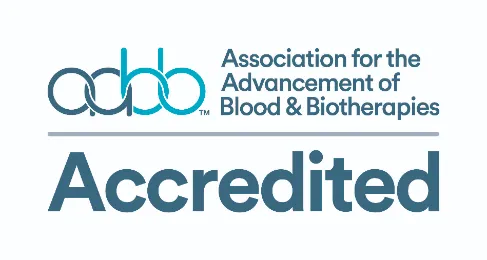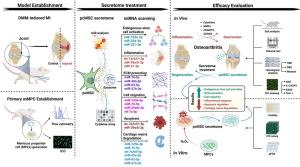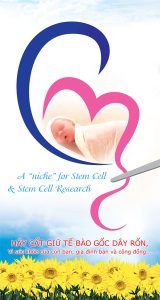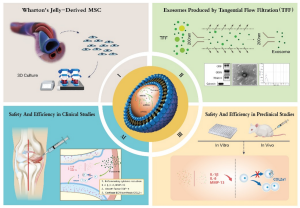Parent’s Guide to Cord Blood, August 2025
In 2024, the Pediatric Society of Argentina published the results of a clinical trial which used cord blood to treat babies that were deprived of oxygen at birth1. This was a remarkable achievement, making Argentina one of only three countries (along with the USA and Japan) to complete and publish a cord blood trial for a condition that is very difficult to treat1-5. What makes this achievement even more remarkable, is that the clinical trial was organized and partially funded by a charitable foundation that was launched in memory of a little girl named Delfina.
When a baby is deprived of oxygen during birth, it triggers swelling in the brain. Those babies that survive face a lifetime of neurologic impairments. This condition is called Hypoxic Ischemic Encephalopathy (HIE) in English, or Encefalopatía Hipóxico-Isquémica (EHI) in Spanish. Very often, babies with HIE are later diagnosed with cerebral palsy6-8.
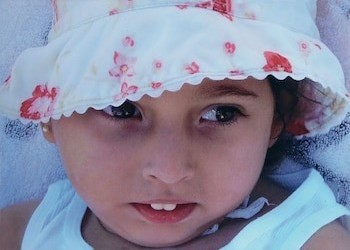
Delfina was born to Ximena Beilin and her husband Roberto Baratelli on 16 April 2004. The pregnancy was uneventful, but during labor the doctors failed to notice that Delfina was not getting enough oxygen, and as a result she was born with HIE. The parents won a malpractice lawsuit in 2011, but this legal justice cannot erase the impact of the brain injury on the child and the child’s family. Ximena devoted herself to finding the best therapies for Delfina. She learned about the compassionate use treatment program run by Dr. Kurtzberg at Duke, which had only just begun accepting children with brain injuries in 2005. In October 2006, Delfina became one of the earliest patients to seek cord blood therapy at Duke for neurodevelopmental disorders. Delfina was the very first child to travel to Duke from Argentina, bringing her own cord blood that had been stored in the family bank MaterCell. This treatment was also facilitated by support from Argentina’s authorities in transplantation, the agency INCUCAI and the public cord blood bank at Hospital Garrahan.
After the cord blood treatment at Duke, Delfina showed signs of improvement. She progressed from liquified to thickened foods, she had better eye focus, and she was building motor skills. Sadly, Delfina passed away in 2007, barely six months after the cord blood therapy, at the age three and a half years old. Delfina already had an older sister and a younger brother when she passed; after that, her parents had a fourth child, a son.
The Baratelli family felt the need to do something to support other parents of children with HIE. In May 2008, they incorporated the non-profit Delfina Baratelli Foundation for the Prevention and Repair of Brain Injuries8,9. The primary mission of the foundation was to provide educational resources to both parents and healthcare professionals. Their biggest goal has been to update the medical practices in Argentina so that children that undergo asphyxia at birth will receive state-of-the-art care.
The name of the foundation was changed to Prevención y Reparación de la EHI, or prEHI, in 2019. This was done partly to help parents in Latin America searching for EHI information to find the organization more easily. It also reflected a shift away from a traditional non-profit structure to a patient community with mutual support.
In 2013, INCUCAI, the Ministry of Health in Argentina, approved a cord blood clinical trial for HIE that followed the treatment protocol developed at Duke University1,8,9. This trial protocol was prepared under the initiative of the former Delfina Baratelli Foundation. Babies identified as having HIE would receive two interventions: therapeutic hypothermia as well as an infusion of the child’s own cord blood. These interventions must be delivered within the first 72 hours after birth. In Argentina, the medical doctor leading the study has been Dr. Claudio Solana, head of Neonatology at the Sardá Maternity Hospital in Buenos Aires. The Delfina Baratelli Foundation funded Dr. Solana to visit Duke for training in the treatment protocol. The trial also relied on cord blood processing from the public umbilical cord blood bank of Garrahan Hospital.
Clinical trials of autologous cord blood for HIE are notoriously difficult, because the cord blood must be collected from a baby that is born in distress. There is also the time pressure to prepare the cord blood stem cells and infuse the baby as soon as possible. Duke University began a multi-center phase 2 trial of their protocol in the USA, but ended it early because the sites were having difficulty achieving adequate collections of cord blood3. Subsequently, Duke ran a small trial that used off-the-shelf mesenchymal stromal cells (MSC) from umbilical cord tissue as cell therapy for HIE10. In Argentina, the trial of cord blood for HIE enrolled 12 infants between 2014 and 20191. When it was accepted for publication in 2024, it became one of only three published phase 1 trials of autologous cord blood for HIE. All of these studies agree that the procedure is feasible, safe, and worthy of further study.
Despite early achievements, the future is uncertain for clinical trials using cord blood to treat HIE. The best way to deliver adequate cord blood doses to children born with HIE is to use donated cord blood from a public bank, rather than struggling to obtain adequate collections from babies in distress. The use of an allogeneic cell therapy will require the authorities to grant additional regulatory approvals for the clinical trial. The use of cord blood from a donor would also create a challenge for the cord blood bank to find and prepare a sufficiently matched unit within a short time window. Hopefully these challenges can be overcome and the benefits of cord blood therapy for HIE will receive further examination. As one Argentine pediatrician said, “If you can offer a child with neurological injuries a therapy that moderates their severe damage, you change their destiny.”
References
- Solana C, Balanian N, Machado S, Binda V, Kuperman S, Gamba C, Roca V. Using autologous umbilical cord blood and placental cells for hypoxic-ischemic encephalopathy: an exploratory safety and feasibility study. Archivos Argentinos de Pediatria. 2025; 123(1):e202410366.
- Cotten CM, Murtha AP, Goldberg RN, Grotegut CA, Smith PB, Goldstein RF, Fisher KA, Gustafson KE, Waters-Pick B, Swamy GK, Rattray B, Tan S, Kurtzberg J. Feasibility of Autologous Cord Blood Cells for Infants with Hypoxic-Ischemic Encephalopathy. Pediatrics. 2014; 164(5):973-979.e1.
- Cotten CM, Fisher KA, Malcolm W, Gustafson K, Kurtzberg J. Phase II Clinical Trial of Autologous Cord Blood Cells for Neonates with Hypoxic-Ischemic Encephalopathy. Pediatric Academic Societies 2020; presentation 1770.2.
- Tsuji M, Sawada M, Watabe S, Sano H, Kanai M, Tanaka E, Ohnishi S, Sato Y, Sobajima H, Hamazaki T, Mori R, Oka A, Ichiba H, Hayakawa M, Kusuda S, Tamura M, Nabetani M, Shintaku H. Autologous cord blood cell therapy for neonatal hypoxic-ischaemic encephalopathy: a pilot study for feasibility and safety. Scientific Reports. 2020; 10:4603.
- Bruschettini M, Romantsik O, Moreira A, Ley D, Thébaud B. Stem cell‐based interventions for the prevention of morbidity and mortality following hypoxic‐ischaemic encephalopathy in newborn infants. Cochrane Review. 2020; CD013202.
- HOPE for HIE.
- Cerebral Palsy Alliance.
- prEHI – por la Prevención y Reparación de la EHI.
- Koruk C. La historia de una mamá que lucha para que las terapias celulares sean una esperanza para los niños con parálisis cerebral. Infobae. Published 2018-04-26.
- Cotten CM, Fisher K, Malcolm W, Gustafson KE, Cheatham L, Marion A, Greenberg R, Kurtzberg J. A Pilot Phase I Trial of Allogeneic Umbilical Cord Tissue-Derived Mesenchymal Stromal Cells in Neonates With Hypoxic-Ischemic Encephalopathy. Stem Cells Transl. Med. 2023; 12(6):355–364.
Source: Parent’s Guide to Cord Blood
Link: https://parentsguidecordblood.org/en/news/delfinas-legacy-cord-blood-research-hie

